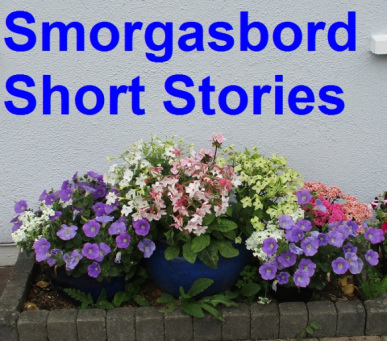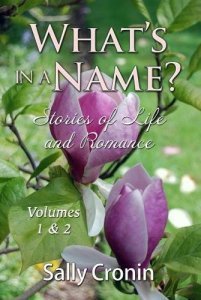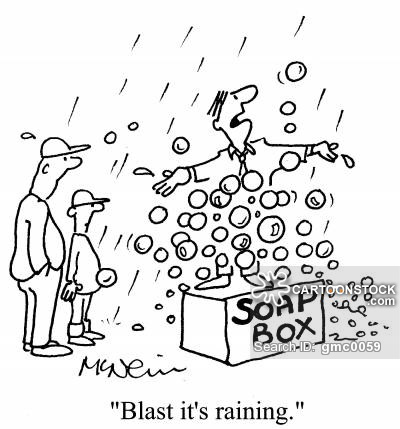K.D. Dowdall's Blog, page 27
November 20, 2018
Mr. Trump, do you have no decency?
Professor French, thank you so much for posting this important commentary! As a former military wife, and having grown up in a military family, it is difficult to believe that any soldier or commissioned officer could ever be proud of or salute this President. Thank you!
 charles french words reading and writing
charles french words reading and writing

I try not to be political in this blog, but I cannot be silent.
President Trump has a history of attacking service members and their families, which gives the lie to his claim that he supports the military. He attacked Senator McCain, a gold star family, and now Admiral McRaven, a former Navy Seal and special operations commander, who lead the attack and capture of Osama bin Laden, the Al-Qaeda leader and one of America’s greatest enemies.
Trump is a man who avoided military service and who places self-interest above all else. Admiral McRaven, conversely, has lead a life of serving the United States of America. I am not concerned with the Admiral’s political views. I respect him no matter if conservative or liberal. He served the country honorably.
To paraphrase Joseph Welch, whose opposition to Senator McCarthy during the Army-McCarthy hearings helped end McCarthy’s cruel, unAmerican, and tyrannical…
View original post 26 more words
HAPPY THANKSGIVING TO ALL !
The first Thanksgiving was held in early autumn of 1621 at Plymouth Plantation in Massachusetts. The 53 colonists who had survived harsh conditions celebrated with what they called a harvest festival. Over 90 Indians were invited to join the feast of turkey, duck, fish, venison and cornbread.
The feast lasted for several days, and the tradition was repeated at harvest time in the following years. The event was not originally called Thanksgiving because to the Pilgrims, thanksgiving was purely religious. The first recorded day of thanksgiving was held in 1623 in response to a much-needed rainfall. It was much later that the two events were combined to what is now known as Thanksgiving Day, which President Abraham Lincoln made an official holiday in 1863.
The Plymouth colonists built successful relationships with the neighboring Indians who taught them farming techniques. This success was due in part to Squanto, a local Indian who had been kidnapped and taken to England a decade before. Squanto was able to act as an interpreter between the colonists and the local Indians.
Massasoit, chief of the Wampanoags, signed a treaty of alliance with the Pilgrims. The Pilgrims would provide assistance with defense against a neighboring tribe, and the Wampanoags would provide food and teach the Pilgrims how to farm. It was this successful partnership, along with the leadership of colony governor William Bradford, that led to the first harvest festival, or thanksgiving.
HAVE A VERY HAPPY THANKSGIVING TO ALL!
November 18, 2018
Smorgasbord Short Stories – What’s in a Name Volume Two – Vanessa – In a Dilemma by Sally Cronin
Re-blogged on Pen and Paper.


Here is the second story of the weekend from What’s in a Name Volume Two – Vanessa… a mother with a dilemma.

Vanessa – In a Dilemma
Vanessa cradled the cooling mug of tea between her hands and debated getting up and putting the central heating on early. It was just after six o’clock, and having had a sleepless night, she was feeling colder than this spring morning warranted.
She was waiting for the national bulletin to finish and the local report to come on. The images from the top news story last night were still playing in her mind; as they had done as she tried to fall asleep in the early hours. She usually lay awake waiting for her son Jack to get home, but even when she heard him open the front door and creep up the stairs, she had failed to find comfort in his safe…
1,468 more words
November 15, 2018
#Writephoto – Calm
Re-blogged on Pen and Paper
The calm exterior of the neatly dressed, elderly woman in the chair crumbled. Her lined face twisted as the tears flowed down her face and sobs racked her body.
“I watched him die in the back room. He was only three years old.”
The doctor in the other chair nodded encouragingly but did not say anything.
“He stood on a rusty nail in the backyard. Within a few days he became ill with a high fever and it soon became apparent that there was something very wrong with him. The doctor came but there were no antibiotics available in those early days of the war so there was little he could do to stop the infection that swept through Grant’s child’s body.”
The doctor wrote some notes on the startlingly white page of his notebook.
“We watched him die an agonizing death. All the muscles in his frail body spasmed…
View original post 85 more words
St. Joseph’s Indian School
For a couple of years now, I feel as though I have adopted many children just by sending them cards, letters, and sometimes gifts. I love them. It is the most wonderful thing in the world to do. I hope that anyone interested would consider these beautiful Lokota Indian children by sending them a card, a letter and/or a small donation or gift. Anything at all would make a difference in their lives. They have already lost so much that is breaks my heart and so giving just a little love, joy, and care helps them so much.
Native American (Lakota) Culture
Culture is defined as the established beliefs, social norms, customs and traditions of a group of people. The same is true for Native American culture. Factors like geography, history and generations of spirituality, stories and traditions also shape the culture of any given tribe or people. Native Americans are no exception.
Here at St. Joseph’s Indian School, we have had the privilege of working with Native American families and communities since 1927. In 1991, the Akta Lakota Museum & Cultural Center was established on our campus to honor and preserve the historical artifacts and contemporary art that tell the story of the Lakota (Sioux) people of the Northern Plains.
Native American culture is sometimes thought of as a thing of the past. However, contemporary powwows, art and language revitalization efforts make a real difference in their lives as their traditional identity.
November 14, 2018
3 Keys to Novel- Writing Success – by C.S. Lakin…
Re-blogged on Pen and Paper!
 Chris The Story Reading Ape's Blog
Chris The Story Reading Ape's Blog

In consideration of National Novel-Writing Month (NaNoWriMo), I’m reprinting a post I ran a couple of years back, which should be helpful to anyone writing a novel!
Anyone who’s written a novel—or attempted one—can attest to the level of difficulty involved.
Some of you are presently in the throes of NaNoWriMo (National Novel Writing Month). You’re racing the clock trying to complete a novel in one month. And that’s a fun and challenging thing to do.
But here’s my question for you: Why are you doing this? Is it just to see if you can throw together something that looks like a novel so you can feel a sense of accomplishment? And don’t get me wrong—I don’t belittle this at all. It takes real strong stick-to-itiveness (yes, that’s a word!) and a big jar of butt glue to stick you in that chair and write a whole lot of words.
View original post 27 more words
November 12, 2018
HOW TO START A NOVEL
Great opening lines
Consider the following . . .
“All this happened, more or less.” Slaughterhouse Five, Kurt Vonnegut
“It was a queer, sultry summer, the summer they electrocuted the Rosenbergs.” The Bell Jar, Sylvia Plath
“‘What makes Iago evil?’ some people ask. I never ask.” Play It as It Lays, Joan Didion
“The snow in the mountains was melting, and Bunny had been dead for several weeks before we understood the gravity of our situation.” The Secret History, Donna Tartt
“I don’t think my stepfather much minded dying. That he almost took me with him wasn’t really his fault.” To the Hilt, Dick Francis
“Nobody ever warned me about mirrors, so for many years I was fond of them, and believed them to be trustworthy.” Boy, Snow, Bird, Helen Oyeyemi
Did these first lines draw you in, make you want to go find the books and read them? Look what a single sentence can do!
No one will deny that a novel’s beginning is key to its success. Some might argue that its ending is even more important, but we’re not here to have that debate. Instead, we’re going to talk about how to start a novel—specifically, how to craft a stellar opening line and great opening paragraphs.
The writer’s goal for page one
Before we can discuss the specifics of how to start a novel, we need to talk about a writer’s goals for a story’s opening paragraph. Your primary goal is to make the reader keep reading. Sounds simple. But we know from our own experiences as readers, that it’s not so simple. How many times have you pulled a book off a library shelf, perhaps intrigued by the cover, read the first line or three, and re-shelved it? Hundreds of times, right? Do you read two or three pages, or an entire chapter while standing in the bookstore? I don’t. If a writer hasn’t snared me by the end of the first paragraph, I don’t pull out my Visa.
What keeps a reader reading?
Books and articles on how to start a novel sometimes list dozens of things that will keep a reader reading. In my experience, they boil down to only two reasons: a compelling character (not necessarily “likable”) and/or getting swept into the action. Both of these hinge on evoking curiosity, making the reader want to know more about the character or find out how the action turns out, and setting up conflict. (There is a special, third way to start your novel, that I’ll discuss at the end.)
How to start a novel with a compelling character
No one technique will snare all readers, but we can make some generalizations. For the purposes of this section, let’s consider the opening paragraph, only three sentences, of Neil Gaiman’s American Gods.
Shadow had done three years in prison. He was big enough and looked don’t-fuck-with-me enough that his biggest problem was killing time. So he kept himself in shape, and taught himself coin tricks, and thought a lot about how much he loved his wife.*
Raise questions.
If your opening line or opening paragraphs raises questions in the reader’s mind, she is more likely to read on to discover the answer. The immediate question Gaiman’s first line brings to mind is “What did Shadow do to end up in prison?” We keep reading, hoping to find out.
Introduce a multi-layered, interesting character.
Shadow’s a big, apparently tough dude in prison, but he’s teaching himself coin tricks, of all things, and he loves his wife. These front-and-center contradictions pique a reader’s interest (and all promise conflict). As a bonus, he’s sympathetic. We tend to be drawn to smart, curious people (teaching himself coin tricks), and people who love their family members, so we’re pre-disposed to like Shadow, even though the first thing we learn about him is that he’s in prison.
How to start a novel with action
In his book The Watchman, Robert Crais opens with the kind of action that keeps a reader reading. (Note: This great opening paragraph is only two sentences.)
The city was hers for a single hour, just the one magic hour, only hers. The morning of the accident, between three and four A.M. when the streets were empty and the angels watched, she flew east on Wilshire Boulevard at eighty miles per hour, never once slowing for the red lights along that stretch called the Miracle Mile, red after red, blowing through lights without even slowing; glittering blue streaks of mascara on her cheeks.*
Engage the reader in the action.
Confess—you don’t want to keep reading this to find out who the woman is as much as to see if she crashes and what happens then. Will she die? Will she kill someone? Crais has roused our curiosity and promised conflict with “the accident” and what we think is an impending crash. Book beginnings like this make us keep reading.
Introduce a character.
Any character. Even when opening with an action sequence, you still need a character. There’s a (possibly apocryphal) story about a screenwriter pitching a producer on his script. The screenwriter describes in great detail an opening sequence featuring a Mercedes speeding down the road, skidding off a cliff, and bursting into flames when it hits bottom. The producer asks: “Yes, but who’s in the car?”
Part of the reason we keep reading The Watchman is because there’s a woman, and she’s got fanciful ideas about the city, and maybe she’s crying (the mascara on her cheeks). She is by no means compelling (certainly not like Shadow in the earlier example), but she’s there and she’s got the hubris to think of Los Angeles as “hers.” It’s enough, in concert with the action, to make us read on.
How to start a novel with the power of language
I know I said that readers keep reading only if you arouse their curiosity by introducing a compelling character or involving them in action, both of which promise conflict. There is, actually, a third method, less often used because it requires a master’s hand, that I call “the power of language,” that does neither of those things. It can be a descriptive passage, a ruminative nugget of interior dialog, or some other bit of narrative that bowls the reader over with the beauty of the language and the narratorial voice. Consider this opening from Alice Hoffman’s The River King.
The Haddan School was built in 1858 on the sloping banks of the Haddan River, a muddy and precarious location that had proven disastrous from the start. That very first year, when the whole town smelled of cedar shavings, there was a storm of enormous proportions, with winds so strong that dozens of fish were drawn up from the reedy shallows, then lifted above the village in a shining cloud of scales. Torrents of water fell from the sky, and by morning the river had overflowed, leaving the school’s freshly painted white clapboard buildings adrift in a murky sea of duckweed and algae.
There’s no character here, no action. It’s a description of a past storm and its effects. Put like that, it’s not very compelling, is it? The only whiff of present-day conflict lies in “had proven disastrous from the start,” which seems to foreshadow more disaster in the story ahead. But Hoffman’s description, her use of conflict-laden words like “precarious,” “disastrous,” and “torrents,” and that one beautiful image of a shining cloud of scales, reel us in. We want to lose ourselves in this language, in the world Hoffman is creating, and so we keep reading.
You cannot spend too much time getting your first line and opening paragraph right, making them great. Here’s your checklist for how to begin a novel:
Does it raise one or more questions?
Does it promise conflict?
Does it introduce a compelling character?
Does it sweep the reader into the action?
Does it exhibit the power of language?
If you have included one or more of those elements when you are starting your novel, you’ve probably got a great opening paragraph. (If not, you may have veered into some of the classic ways not to start a novel.)
What’s your favorite opening line of all time? Tell us on our Facebook page.
LAURA DISILVERIO is the national best-selling and award-winning author of 21 (and counting) novels, including standalone suspense novels and several mystery series. Her teenagers coaxed her into writing a young adult novel, and the result is the dystopian Incubation Trilogy, an Amazon bestseller. She is a past President of Sisters in Crime and a frequent keynote speaker and teacher at writers conferences and events.
November 9, 2018
Do you care? – by Sue Vincent…
Sue is a wonderful writer and this piece is truly exceptional. Thank you for sharing Chris!
 Chris The Story Reading Ape's Blog
Chris The Story Reading Ape's Blog
There’s more to caring, than caring:
 ‘Blast it’s raining!’
‘Blast it’s raining!’
I wandered through into the kitchen, snuggled in my dressing gown, to boil my own kettle for my second coffee of the day… an unaccustomed luxury. I am usually at work by that time, dragged reluctantly from sleep by the alarm clock, woken by the cold pre-dawn walk with the dog and, seven days a week, drink my second cup of coffee perched on the end of my son’s bed. Last night, I had dressed and driven back to work when I should have been on my way to bed. Tomorrow, I will be at work before dawn. These things happen in my job. While my son, quite rightly, objects to me calling him ‘work’, he is, after all, both my job and my employer (and it is better than some of the things I have called him…)
Continue reading HERE
November 5, 2018
THE IMITATION GAME: Learning How to Be a Copy Cat!
THE IMITATION GAME: Learning How to Be a Copycat!
In Writer’s Digest magazine this month, I was stopped in my tracks, when I saw this article by Karen Krumpak. I thought…What?
But then reading on, I realized that this is what artists do all the time. The apprentice artists are required to copy their “Master’s work” in paintings, watercolor, and pastels. Okay, I thought, but how is copying, word for word, another author’s work going to help me? And is this a good idea? In my effort to understand this “Game”, I read on.
And, I then discovered that this is a practice game to improve writing skills. Great, I thought, I am hooked! It was a relief though, to know I wouldn’t be the only copycat. I was in good company: Jack London, Benjamin Franklin, and Hunter S. Thompson (I honestly don’t know who this man is or was.)
Next step: Learning to Copycat or rather finding a writer I love and want to copy, but, as I found out, this is not as easy as pie…it takes work! Work?? More work??
Okay…I am Game! (pun intended)
Ms. Karen Krumpak, the author of this article, states that “You will learn to have your own Voice and your own Distinctive Style!” This sounded like magic to me, as I imagined my own Strong voice, and my own Distinctive style!
Or, would I be, “The New Copycat Killer of Words?” (secretly, I wondered if I would finally learn to properly use punctuation, and even learn how to use italics with confidence. I have a secret love for italics—don’t ask me why, I don’t know. Italics are very pretty to look at, aren’t they?
The first thing is to sort through your personal library for a writer that you would love to imitate. So, several hours later….I finally made a decision!
I chose a book with 870 pages: THE MISTS OF AVALON. I figured that after 870 pages…I would really have my own Strong voice and my own Distinctive style! This would be the “Cat’s Meow” (Pun intended)!
This choice was perfect for me with my love of legends, fantasy, fairytales, and most of all, the Magic of Morgan Le Fay, in other words; the magic of a legends, and the magical saga of all the women behind King Arthur’s Throne. Ah Ha! This is true…there are always women standing behind a man’s throne! (Just to be sure he didn’t forget anything. We women are so helpful.)
Next step: Learn how to be a Sherlock Holmes, but where is my Watson? Well, as Karen Krumpak states, “forcing yourself to impersonate another writer takes off the pressure of writing? Really? What pressure?
Soon, I am told, I will start reading like a writer. But, I do that already…maybe. Normally, I just read, for the pleasure of it. But, if I must, I will.
Soon, states Ms. Krumpak, I will learn to stretch my skills and improve my technique. This better work…if it doesn’t, well, I will have enjoyed immensely, re-reading The Mists of Avalon, just like a real writer reads a book. Good to know![image error]
November 3, 2018
#SOCS #Poetry – Nation
I find this exercise in creative writing is a wonderful way to not only be more creative, but may stop writer’s block, opening up interesting insights for a new character and even help starting a new novel. The list is endless, and Roberta’s blog is full of interesting and helpful ideas for writers as well as being a very creative writer herself – drop by Roberta’s blog and thank you for this post!





